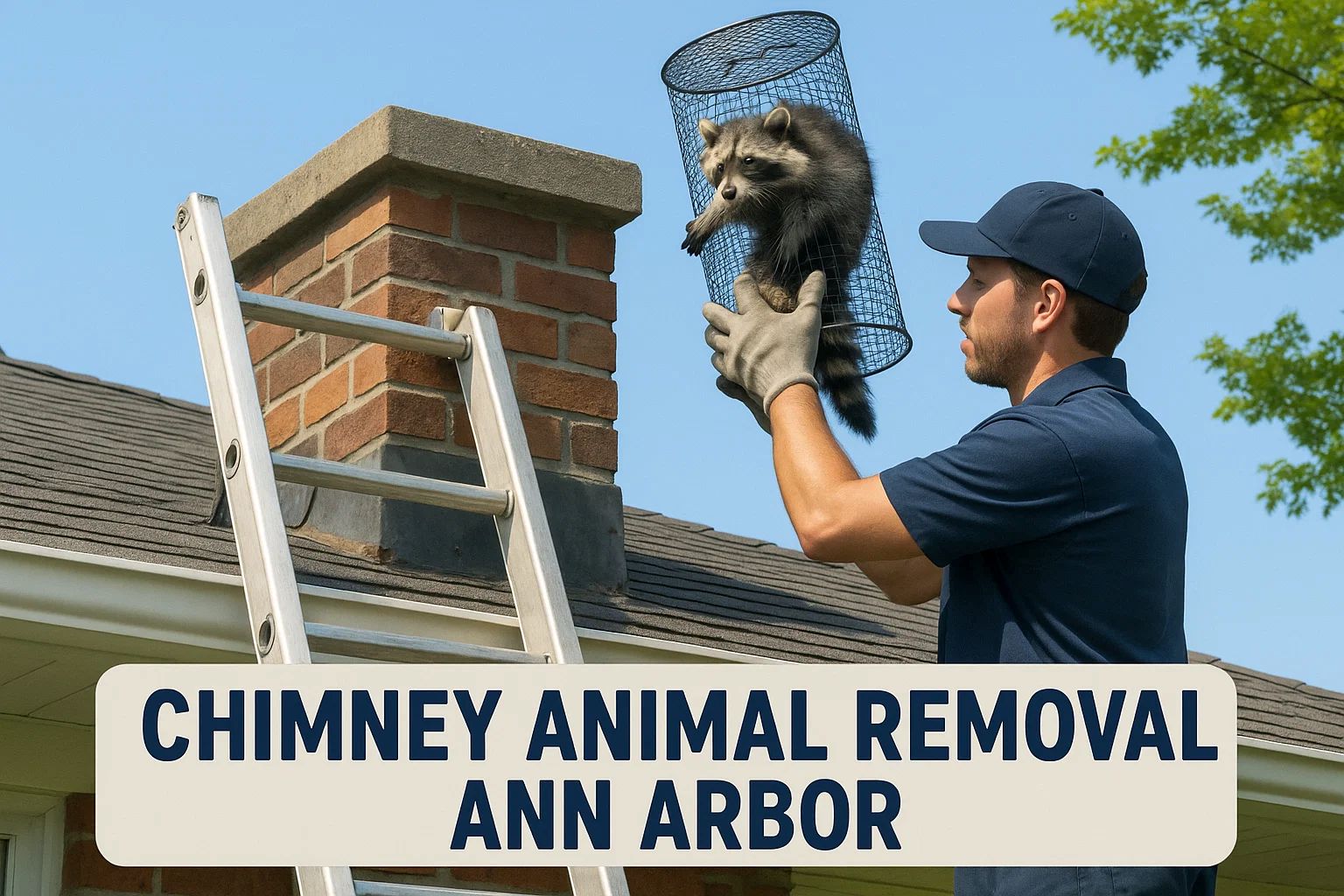If you live in Ann Arbor, you know how common it is for curious critters to find their way into places they shouldn’t be—like your chimney! Whether it’s the scuffle of squirrels, the flapping of birds, or the squeaks of raccoons, unexpected guests can quickly turn your cozy fireplace into a wildlife hotel. But how do you get them out, and more importantly, keep them out for good? Let’s dive into the world of animal removal, focusing on real-life methods locals use to gently and safely evict furry or feathery squatters. For those looking for expert help, Ann Arbor Chimney Sweep has become a trusted name in Chimney Animal Removal.
Why Animals Love Your Chimney (And How to Spot Them)
Your chimney might seem like an odd choice for a home, but for many animals, it’s the perfect hideout. It’s dark, warm, and away from predators. Birds like chimney swifts actually seek out chimneys as nesting spots, while raccoons are drawn to their cozy interiors for raising babies. Squirrels and even bats can squeeze through surprisingly small openings to claim your chimney as their new address.
The signs aren’t always subtle. You might hear scratching, chirping, or rustling, especially early in the morning or at dusk. Sometimes, you’ll notice strange smells drifting from the fireplace or even see debris falling into your firebox. Spotting these clues early can save you from bigger problems, like blocked flues or even a chimney fire.
Gentle Ways to Encourage Animals to Move Out
Before you panic or try anything drastic, know that there are safe, humane ways to encourage animals to leave. One popular approach is the “wait and watch” method, especially if you suspect a mother raccoon has babies. Professionals will often wait until the young are old enough to move, then create a gentle disturbance—like playing a radio softly or shining a light up the chimney—to nudge the family to relocate.
Another trick is using scent repellents. Some animals dislike strong smells like ammonia or predator urine (don’t worry, you can buy synthetic versions at hardware stores). By placing these near the top of the chimney, you can make your home less appealing without harming the animals.
“The goal is always to encourage animals to leave on their own. Forcing them or sealing the chimney without checking can leave babies trapped inside, which is both heartbreaking and a major mess to clean up later.”
Hands-On Removal: When It’s Time to Call in the Pros
Sometimes, animals won’t budge or the situation is too risky for DIY methods. That’s where trained experts step in. They use special tools like one-way doors, which let animals exit the chimney but don’t allow them back in. This is especially effective for raccoons and squirrels.
For birds, especially protected species like chimney swifts, removal must be handled with care and often requires permits. Pros will assess the situation and follow the law, sometimes waiting until nesting season is over before taking action.
If there’s a nest or debris blocking the flue, professionals use rods, vacuums, or gentle hand removal to clear the way. Safety comes first—for both the animals and your home. Afterward, they’ll often inspect the chimney for damage and suggest repairs if needed.
Prevention: Keeping Future Visitors Out
Once the coast is clear, you’ll want to make sure animals don’t return. The best long-term fix is a chimney cap—a metal or mesh cover that lets smoke out but keeps critters from getting in. These come in all shapes and sizes, and a professional can recommend the right one for your setup.
Regular chimney inspections are also key. A pro will spot small gaps or cracks where animals might squeeze through and can seal these up before they become a problem. Think of it like locking your doors and windows—it’s much easier to stop animals from getting in than to evict them later!
| Method | When to Use | Pros | Cons |
|---|---|---|---|
| Wait & Watch | Mother animals with babies | Humane, low stress for animals | Takes longer, not always practical |
| Scent Repellents | Deterring animals who haven’t nested | Easy, non-invasive | May not work for all species |
| One-Way Doors | Persistent raccoons, squirrels | Effective, humane | Needs expert installation |
| Manual Removal | Nests, blocked flues | Immediate results | Best left to professionals |
| Chimney Caps | Preventing future entry | Long-lasting protection | Requires installation |
FAQs on Chimney Animal Removal in Ann Arbor
Q: Can I remove animals from my chimney by myself?
A: Simple deterrents can work, but it’s usually safer and more effective to call a professional, especially for larger animals or nests.
Q: Are all animals in the chimney a danger?
A: Not always, but they can block airflow, cause odors, or even bring fleas and ticks into your home. Plus, nests can start fires if left unchecked.
Q: What happens to the animals after removal?
A: Most pros use humane methods that allow animals to leave on their own. If manual removal is needed, animals are often relocated safely.
Q: How soon should I act if I hear animals in my chimney?
A: Sooner is better. The longer animals are inside, the more likely they are to cause damage or become trapped.
Conclusion
Living in Ann Arbor means sharing space with a lively mix of wildlife, but your chimney doesn’t have to be open season for critters. By recognizing the signs of animal visitors, using gentle removal strategies, and investing in smart prevention, you can protect your home and keep animals safe. If you ever feel out of your depth, don’t hesitate to call Ann Arbor Chimney Sweep—they’re always ready to handle Chimney Animal Removal with care and expertise.
Read More : Ann Arbor Chimney Sweep

